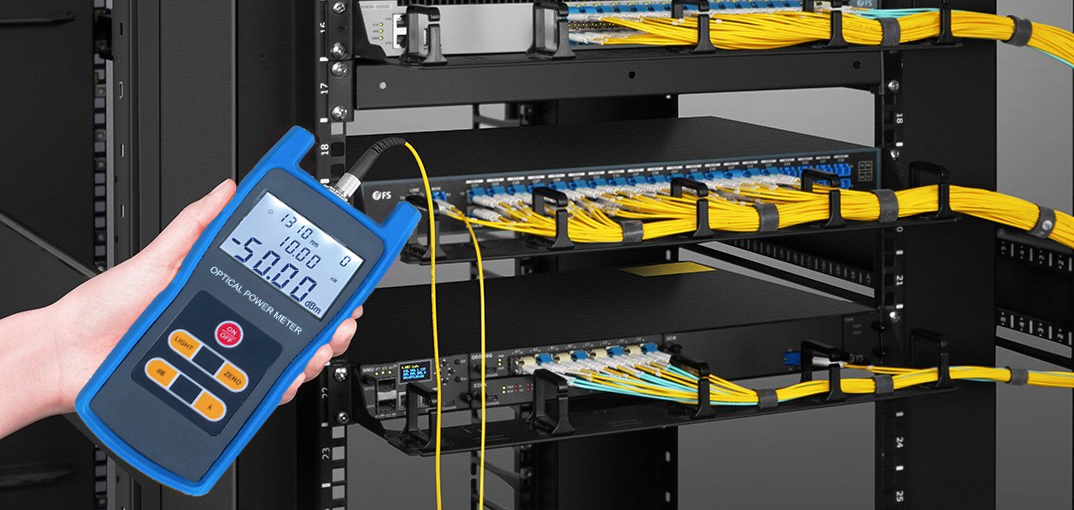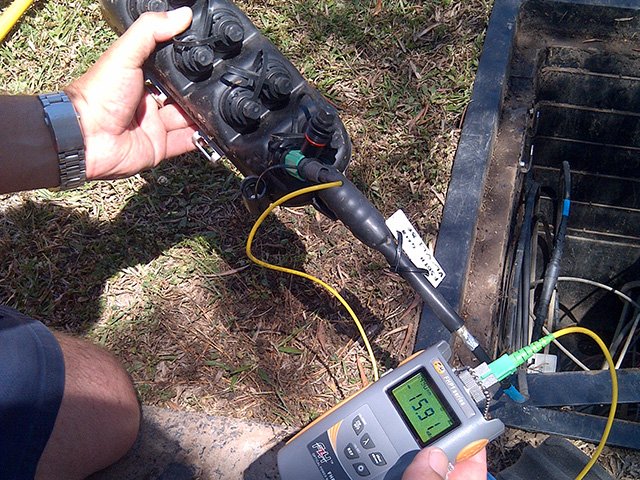Revealing the Trick Use Optical Fiber Testing for Efficient Data Transmission
In the world of modern-day interaction, optical fiber screening arises as an essential method for optimizing data transmission. Comprehending the diverse applications of optical fiber screening invites a deeper exploration right into its pivotal duty in shaping the future of data interaction.

Value of Optical Fiber Screening
The value of optical fiber testing can not be overstated, as it works as a vital component in making sure the reliability and efficiency of data transmission systems. In an era where high-speed interaction is extremely important, any shortages in fiber optics can cause considerable information loss and lowered efficiency. Rigorous testing methods are necessary to validate the stability and efficiency of optical cables.
Testing permits the recognition of issues such as micro-bends, macrobends, and splice losses that can prevent signal top quality. Furthermore, it offers insights right into the total depletion and data transfer capacities of the fiber, making sure that the network meets particular functional requirements. Routine screening not only boosts system performance yet additionally prolongs the life expectancy of the framework by determining possible problems prior to they escalate right into costly failings.

Sorts Of Optical Fibre Tests
Various types of optical fiber examinations are carried out to ensure the efficiency and integrity of fiber optic networks. These tests can be classified right into numerous vital kinds, each serving a specific function in analyzing the honesty of the fibre.
First, Optical Time Domain Name Reflectometry (OTDR) is a noticeable examination that identifies faults, mates, and connectors within the fibre. By sending pulses of light and assessing the reflected signals, specialists can pinpoint concerns along the fibre's size.
Second, insertion loss examinations examine the amount of signal loss when light passes with ports or splices, which is crucial for maintaining network efficiency.
Third, return loss examinations determine the amount of light reflected back towards the source, providing understandings into the quality of links and prospective resources of disturbance.
In addition, connection examinations make sure that the fibre course is total, allowing technicians to verify that the fiber is intact with no breaks. optical fibre testing equipment.
Finally, aesthetic fault locators use noticeable light to recognize breaks or extreme bends in the fibre, helping in fast troubleshooting. Collectively, these examinations develop a thorough method to keeping optimal performance in fibre optic networks.

Applications in Network Upkeep
In modern-day telecoms, efficient network maintenance counts heavily on optical fiber screening to determine and rectify concerns promptly. Regular weblink screening makes sure that the network operates at ideal efficiency levels, minimizing downtime and enhancing individual experience.
One of the main applications of optical fiber testing in upkeep is the detection of faults, such as breaks, flexes, or improper connections. Methods like Optical Time Domain Reflectometry (OTDR) enable specialists to situate these concerns precisely and examine the high quality of the fibre link. In addition, loss testing verifies the stability of the optical path, making sure that signal attenuation continues to be within appropriate limitations.
Regular upkeep screening likewise aids in preventative steps, identifying potential problems prior to they escalate into considerable failures. This positive technique can save organizations both time and funds. During upgrades or expansions, optical fibre testing makes certain that brand-new installments incorporate perfectly with existing facilities.
Enhancing Information Transmission Reliability
Reliable network upkeep through optical fiber testing not only addresses instant problems however additionally plays a significant function in improving data transmission dependability. By recognizing mistakes, gauging signal loss, and assessing the overall problem of fiber optic wires, screening makes certain that prospective problems are corrected prior to they escalate right into substantial disruptions.
Normal optical fiber screening, such as time-domain reflectometry (TDR) and optical time-domain reflectometry (OTDR), allows technicians to identify the specific locations of breaks, flexes, or port concerns within the network. This proactive approach not just reduces downtime but also enhances the performance of information transmission by guaranteeing that the paths for signals are clear and working successfully.
Additionally, testing aids in verifying adherence to sector standards and requirements, which is vital for maintaining the stability of data flow. By making certain that each link satisfies required thresholds for loss and quality, organizations can strengthen their confidence in the reliability of their data networks.
Eventually, purchasing detailed optical fibre testing not just boosts data transmission dependability however also supports the lasting operational effectiveness of communication frameworks.
Future Fads in Fiber Testing
Emerging innovations are poised to revolutionize fibre testing, paving the method for enhanced efficiency and accuracy in information transmission diagnostics (robotic vision). As the demand for faster web and greater bandwidth remains to rise, the combination of sophisticated tools such as fabricated intelligence (AI) and artificial intelligence (ML) is readied to change traditional fiber screening techniques. These innovations will enable predictive maintenance and automated fault detection, considerably reducing downtime and boosting network integrity
Furthermore, the adoption of Internet of Things (IoT) tools click here to read will facilitate real-time Discover More surveillance of fibre networks, permitting immediate identification of performance concerns. This change in the direction of proactive administration will certainly minimize disturbances and enhance data circulation.
Moreover, technologies in optical time-domain reflectometry (OTDR) and new screening standards will certainly improve the accuracy of measurements, ensuring that information stability is kept throughout the transmission procedure. The introduction of 5G modern technology likewise demands the advancement of more advanced fiber screening methods to sustain its high-speed needs.
Verdict
In conclusion, optical fiber testing is necessary for preserving efficient information transmission within communication networks. Normal screening not just ensures compliance with sector criteria but also promotes proactive upkeep, eventually contributing to the lasting dependability and performance of fiber optic systems.
Comments on “Ofda helps with accurate fibre measurement in multiple applications.”